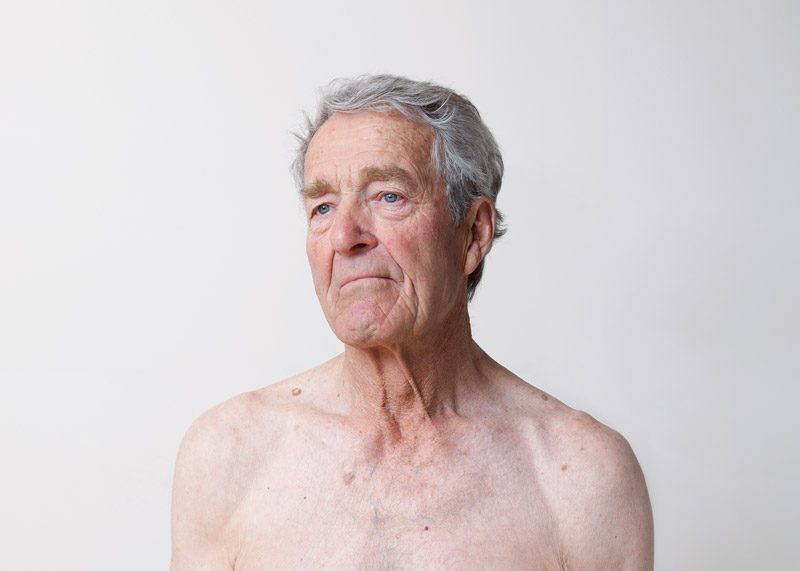Portraits in Light
The Southern Alberta Art Gallery, Lethbridge
September 25 to November 22, 2015
By Stephen Horne
Walking into a room full of strangers can be a disconcerting experience, exposing us to questions about belonging and difference. In contrast to such an expectation, Petra Mala Miller’s exhibition Portraits in Light offers a welcoming embrace, perhaps one that recognizes our commonality as strangers. Mala Miller, an accomplished photographer in her native city of Prague, transported her art practice to Lethbridge, Alberta, a small prairie city notable for its dynamic community of artists. It was from “the inside” of the local milieu and its institutions that Mala Miller assembled her project of formally photographing everyone she met. In addition to the exhibition, which was curated by Christina Cuthbertson, this project situated Mala Miller in a locus of community.
Presented in four viewing situations, Portraits in Light consists of 150 photographic portraits. A serial organization of the portraits in three rows on three walls claims our attention most forcefully as we enter a large gallery space. This arrangement of photographs is supplemented by a book version, a video loop that juxtaposes two images in an irregular sequence framed by an architectural corner, and a large-scale version presented on the exterior screen of a separate but nearby institution, Casa. The wall-mounted images are prints measuring 13″ x 19″, tactfully printed in delicate, neutral colours, the sitter in each case having been lit with the greatest sensitivity to nuance and precision but in perfect anonymity. Each person is entirely without world, a compassionate rendering of vulnerability. Posed according to rule, each sitter faces a quarter left or right and gazes directly ahead without overt expressivity.
The framing from mid-chest upward presents each person without clothing – bared – to reveal more than the conventional head and shoulders; the area of skin visible is a crucial factor, neither sexualized nor cosmetic but literally a compelling shock in its own right. The facial expression in each case is a neutral feeling of suspension, a gaze suspended or calmly held as if by an “interior distance.” As is suggested by the title, the lighting has been given the utmost care, along with the nuanced colour printing. The effect of serial organization with Mala Miller’s work is to shift the subject of the work from the portrait to the viewer – a move that recognizes the desire to look, to see, to regard, and to be touched by lighting.
This emphasis on intimacy clearly distinguishes Mala Miller’s approach from the “passport” approach taken by some other portrait artists, such as Thomas Ruff, who pursued a similar project for his selection of sitters from among friends and acquaintances. His museum-scale photographs present their subjects in the most public of styles, with strong colours, contrasting lighting, and an expressionless gaze directly into the camera. Also of particular interest in situating Mala Miller’s portraits would be Roni Horn’s portrait series You Are the Weather (1994), although Horn focuses on a series based on an individual subject rather than on a series of individuals. Where Horn and Miller’s interests overlap is in the facing of intimacy that occurs in their portrait works.
Many of Mala Miller’s projects have been based in autobiographical recollection juxtaposed with the word of photography. The word of photography is “reproducibility,” and Mala Miller takes photography at its word by way of serial organization applied to a large number of portraits. Her adoption of this organizational practice allows her to present images of persons while avoiding a bourgeois humanism that privileges the isolated and centred individual. In her series, with the large number of portraits and the relatively small scale of each one, it is easy to imagine the outlines of one individual or group merging into another in an ongoing flux or exchange.
Until the emergence of minimalist art, we tended to expect that photographic portraiture would reveal an inner self in the subject of the portrait, the person photographed. Minimalist art showed how artworks could be a matter of relationship and situation, shifting the locus of subjectivity to “situations.” Serial organization could be considered a motif of modernity with its ties to Fordism in the world of industry, and then to various artistic pursuits ranging from sculpture to musical composition. Minimalism and conceptual art have each contributed to an understanding of art in its social dimension, especially through what phenomenology called “intersubjectivity” – a way of describing the relationality that has characterized much art of the modern era.
The celebrated and contentious Family of Man exhibition at MOMA in 1955 and Robert Frank’s The Americans (1958–59) marked an attempt to explore the oncoming sense of a global identity. August Sander introduced the notion of typology to portrait photography, but the shift to an explicitly serial logic occurred with the Bechers and Ed Ruscha, who adopted photography’s logic of one photograph followed by another in a series of perfect reproducibility dedicated to a stance of aesthetic indifference.
The characteristic of this form is that all seem intimately connected and at the same time autonomous and distinct. Mala Miller’s combination of the serial and portrait forms in a personal vision of vulnerability proposes cosmopolitanism as a hopeful outcome to our current pluralization of worlds.
Stephen Horne shares his time between Montreal and France. He writes on contemporary art for publications in Canada and abroad.


